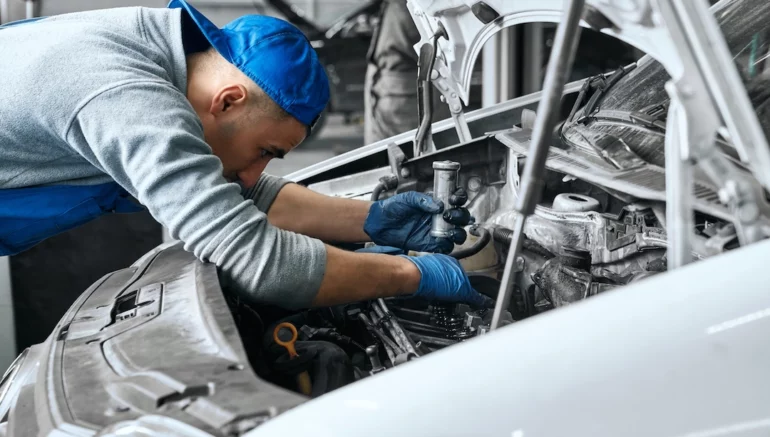
Over the last few years, we have surprisingly come across a lot of people who are unaware of the concept of CEL. They don’t know that the check engine light (CEL) happens to be a warning indicator to alert you regarding an issue with the emissions system of your vehicle. Whenever you find that it is on, acting quickly to diagnose and resolve the problem is critical.
Because we have been providing authentic smog service in Rancho Cucamonga for many years, we felt obligated to educate every vehicle owner in this definitive guide. This informative article will explain what the check engine light means, what causes it to illuminate, and how you can diagnose and repair the problem.
What Does a Check Engine Light Indicate?
This should be the first thing that comes to mind! The check engine light illuminates when your vehicle’s onboard computer (known as the Engine Control Module, or ECM) detects an issue with the emissions system. The engine control module (ECM) is responsible for monitoring a variety of systems and components, including the engine, transmission, catalytic converter, and oxygen sensors. The check engine light can come on for several reasons, ranging from a loose gas cap to a more serious problem like a failing catalytic converter. When the light comes on, you must act quickly to diagnose and repair the problem to avoid further damage and keep your vehicle running smoothly.
What Sets Off the Check Engine Light?
You may be unaware that the check engine light can come on for a variety of reasons. The following are some of the most common causes: Is the gas cap lost or damaged? A faulty or damaged gas cap can cause your vehicle to lose fuel pressure, triggering the check engine light. An Oxygen Sensor Failed The oxygen sensor detects the amount of oxygen present in the exhaust system and sends signals to the ECM, allowing the fuel-air mixture to be adjusted. If the oxygen sensor fails, the check engine light will come on. Catalytic Converter Failure The catalytic converter helps to reduce emissions by converting harmful pollutants into less harmful substances. If the catalytic converter fails, the check engine light will come on. Troubleshooting the Ignition System If there is a problem with your vehicle’s ignition system, the check engine light will illuminate.
A faulty spark plug, ignition coil, or spark plug wire could be the source of the problem. The Mass Air Flow Sensor has failed. The mass air flow sensor measures the amount of air entering the engine and sends signals to the engine control module (ECM) so that the fuel-air mixture can be adjusted. If the mass air flow sensor fails, the check engine light will illuminate. Evaporative Emissions System Leak The system of evaporative emissions reduces the amount of fuel vapor that escapes into the atmosphere. If there is a leak in the system, the check engine light will illuminate.
How Does a Check Engine Light Work?
When your check engine light comes on, you must act quickly to diagnose and repair the problem. You must do the following: Check Your Gas Cap The first step is to look over your gas cap. To begin, make certain that it is securely tightened and that no damage has occurred to the cap or the fuel filler neck. Replace the gas cap immediately if it is loose or damaged, and check to see if the check engine light comes on. Utilize an OBD-II Scanner. An OBD-II scanner is a device that plugs into your vehicle’s OBD-II port and reads the codes stored in the ECM. OBD-II scanners are available in a variety of styles, ranging from simple code readers to advanced scan tools. Once you have the codes, you can use them to help diagnose the problem.
Check Engine Light Diagnosis
If you are unable to diagnose the problem yourself, you can bring your vehicle to
our professional mechanic, who will use a specialized diagnostic tool to do so.
Check Engine Light Diagnosis is Free. Apart from auto repair shops and car dealerships that offer free check engine
light diagnosis as a promotional service or as part of a routine check-up, there are many smog test centers like us.
A technician will use a diagnostic tool to read the error codes stored in the vehicle’s
computer and determine the cause of the check engine light.
If additional repairs or services are required, a few shops may charge a fee.
It is best to check with your local auto repair shop or dealership for their specific
policies on free check engine light diagnosis.
Even if you seek our services, confirm whether or not a free check is available.
Conclusion
We hope that the above write-up was informative enough as a guide for understanding and diagnosing your check engine light. It is our moral responsibility to keep you updated. So, what are you waiting for? Get in touch with us or visit us for the smog check of your vehicle.
